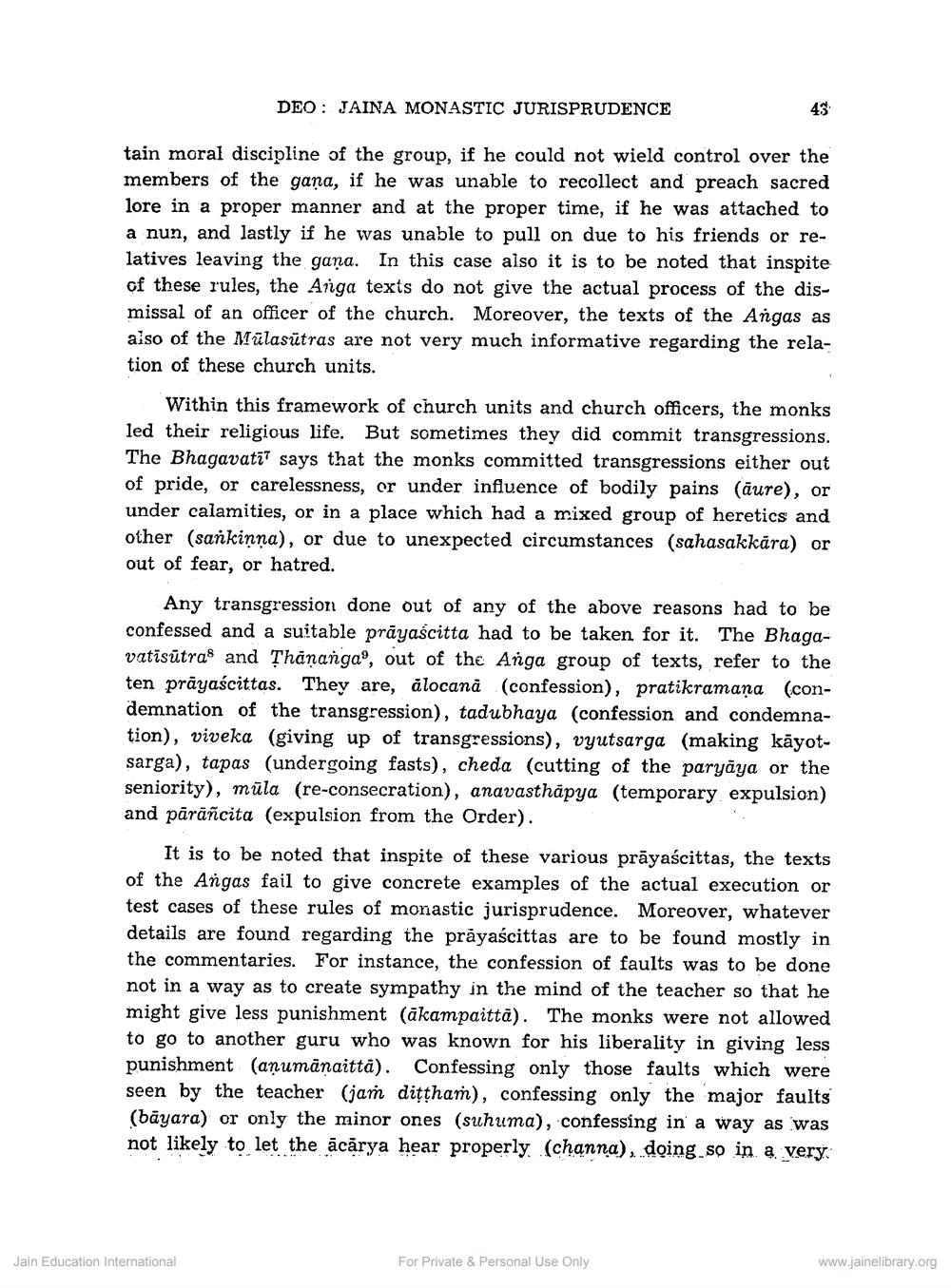Book Title: Some Aspects of Jaina Monastic Jurisprudence Author(s): S B Deo Publisher: Z_Vijay_Vallabh_suri_Smarak_Granth_012060.pdf View full book textPage 3
________________ DEO: JAINA MONASTIC JURISPRUDENCE tain moral discipline of the group, if he could not wield control over the members of the gana, if he was unable to recollect and preach sacred lore in a proper manner and at the proper time, if he was attached to a nun, and lastly if he was unable to pull on due to his friends or relatives leaving the gana. In this case also it is to be noted that inspite of these rules, the Anga texts do not give the actual process of the dismissal of an officer of the church. Moreover, the texts of the Angas as also of the Mülasütras are not very much informative regarding the relation of these church units. Within this framework of church units and church officers, the monks led their religious life. But sometimes they did commit transgressions. The Bhagavatī7 says that the monks committed transgressions either out of pride, or carelessness, or under influence of bodily pains (äure), or under calamities, or in a place which had a mixed group of heretics and other (sankinna), or due to unexpected circumstances (sahasakkāra) or out of fear, or hatred. Any transgression done out of any of the above reasons had to be confessed and a suitable prāyaścitta had to be taken for it. The Bhagavatisūtras and Thānanga', out of the Anga group of texts, refer to the ten prāyaścittas. They are, alocană (confession), pratikramana (condemnation of the transgression), tadubhaya (confession and condemnation), viveka (giving up of transgressions), vyutsarga (making kāyotsarga), tapas (undergoing fasts), cheda (cutting of the paryaya or the seniority), müla (re-consecration), anavasthäpya (temporary expulsion) and pārāñcita (expulsion from the Order). It is to be noted that inspite of these various prāyaścittas, the texts of the Angas fail to give concrete examples of the actual execution or test cases of these rules of monastic jurisprudence. Moreover, whatever details are found regarding the prayascittas are to be found mostly in the commentaries. For instance, the confession of faults was to be done not in a way as to create sympathy in the mind of the teacher so that he might give less punishment (äkampaittä). The monks were not allowed to go to another guru who was known for his liberality in giving less punishment (anumänaittä). Confessing only those faults which were seen by the teacher (jar dittham), confessing only the major faults (bayara) or only the minor ones (suhuma), confessing in a way as was not likely to let the ācārya hear properly. (channa), doing so in a very Jain Education International For Private & Personal Use Only www.jainelibrary.orgPage Navigation
1 2 3 4 5 6 7 8 9 10 11 12 13 14
